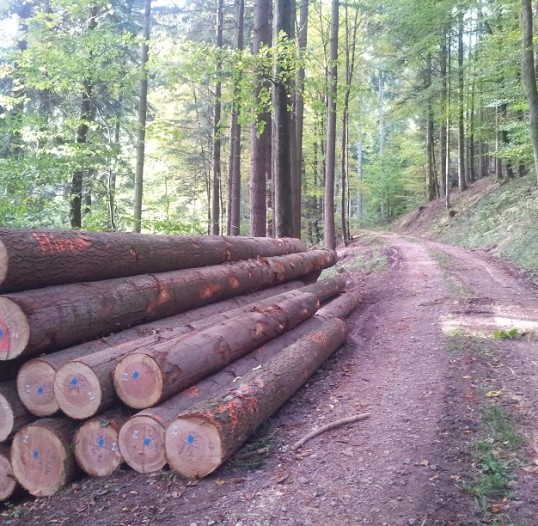Douglas fir Poles for climbing gardens
Where are the poles for climbing parks & high rope courses coming from and what kind of processing steps will take place along their way to a climbing park?
After the Architect has decided to build a climbing park or a high rope course, he is calculating and negotiating with the governmental authorities in order to get a permit. Once he got the permit, he is thinking of how to get the necessary building material, and this is where we come into play. Our company the Hiram GmbH has for many years taken care of costumers, who are in need of exactly such wooden poles.
The Challenge
Our competency is demanded. Our task is to find the most suitable trees, debark and dry them to a certain point, which is necessary so they won’t break. Afterwards they are being shaped and cut in order they can be mounted properly on the foundation. Eventually the poles will be transported to the location of the climbing parks. All this we organize for a reasonable price-performance-ratio. The real challenge usually lies in the selection of the many dozen of poles, required in different lengths and diameters.
The Selection
At first it is important to find suitable stems. They should be 5 to 30 meters long and have a certain top and root collar diameter. They have to be downright straight boled, fine-branched and an undamaged wooden body, which specifically refers to dry rot or insect damages.
Douglas fir, Larch, fir, spruce and pine are most commonly used to produce poles. They are famous for their durability, resistance to bending and the modulus of elasticity. We are following the European DIN standards for timber constructions.


Debarking and Drying
Once we found the most suitable trees, we debark them, mechanical or with high water pressure, gently peeling of the bark. Afterwards they will be assorted and dried in a depot. The empty spaces between the poles make air circulation possible, increasing the effectiveness of the drying process. Debarking, sorting and continuous turning of the poles demand great skill of the responsible persons, to avoid causing damages.
The Modeling
The robust poles have to stand steady on the foundation; therefore they have to be modeled. At one end a form with the length of 1.6m gets sawn out of the pole. This makes it possible to rivet heavy steel plates onto the poles, in order to embed them in the best possible way to the foundation.
The Logistics
Debarking, drying and modeling are usually performed in different locations, increasing the costs of transport significantly. To keep costs as low as possible, we make use of our logistics department, which combines different transport possibilities such as trucks, train and ships. That way we can supply the processed poles to the desired location on time.